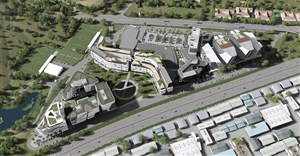Customising knee implants for a better fit

“One possible solution is to design implants that are patient-specific, anatomically accurate, reproduce normal knee motion and are ultimately repeatable," says Dr Johan van der Merwe, a lecturer in the Department of Mechanical and Mechatronic Engineering at Stellenbosch University (SU).
Localised osteoarthritis, surgical reconstruction or replacement of only the damaged part of the knee (unicompartmental knee arthroplasty) may be preferred over the replacement of the entire joint (total knee arthroplasty). Projections are that by 2030 three-million knee replacement surgeries will be done globally. Current knee replacements usually last for 10 years.
“Replacing or repairing only the damaged part may result in faster recovery, improved post-operative joint movement, retains as much of the joint's natural anatomy as possible and is done at a lower cost.
“But designing patient-specific unicompartmental knee replacements ultimately rely on a technician's interpretation and skill in order to consistently reproduce healthy knee shapes. This is a difficult problem – what is considered healthy for one patient might not be the same for another."
Van der Merwe points out that there is often a mismatch between current standardised sizes of commercially available implants and the shape and form of an individual patient's knee. This generally requires the surgeon to make the patient fit the implant, and sometimes even deviate from the ideal intended implant placement based on experience and current best practices to achieve good outcomes.
Model
In an attempt to address these shortcomings, Van der Merwe developed a model based on the various shapes of healthy knees, which could then be used to estimate the healthy shape of damaged parts on a patient's knee.
He used this information to write a semi-automated design program that fits smooth surfaces onto the estimated healthy shape to create implants ready for computer-assisted manufacturing.
“The method proved able to repeatedly generate anatomically compatible implant shapes. We hope that the design could therefore facilitate the restoration of more normal joint function after an operation."
Van der Merwe says by tailoring each implant to the individual, the mismatch between the shape and form of the patient's knee and that of the implant could be reduced.
“This could potentially lead to reduced recovery times and shorter operating times because the patient's bone surfaces don't have to be modified a lot. Implants with a better fit and, in our case, more natural shape, could potentially also improve movement of the joint after an operation."
He adds that the implant designed as part of his study is ready for preliminary clinical testing.














